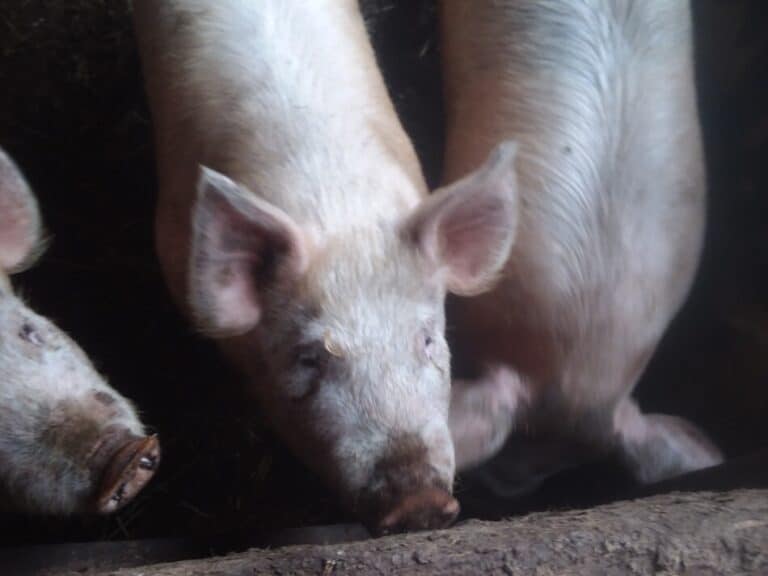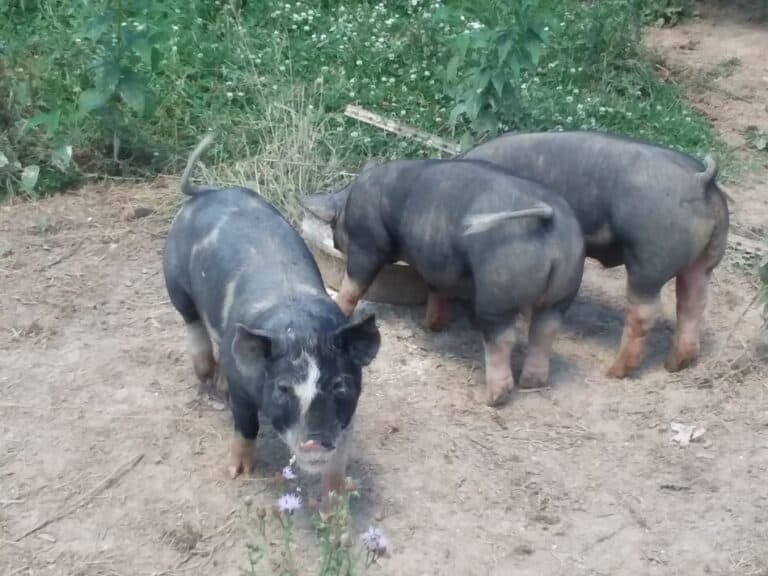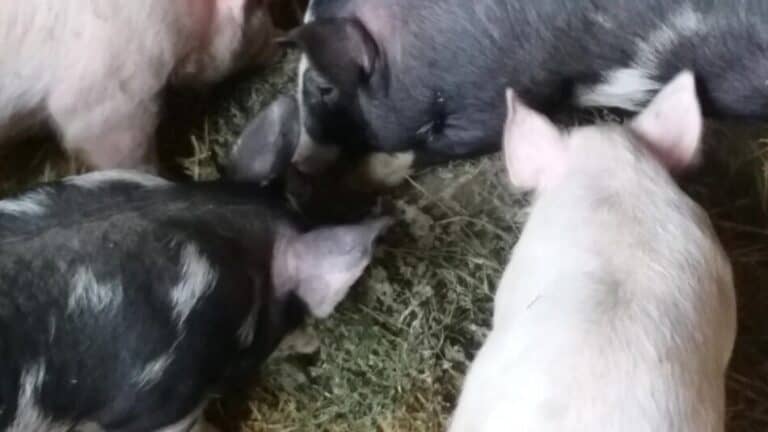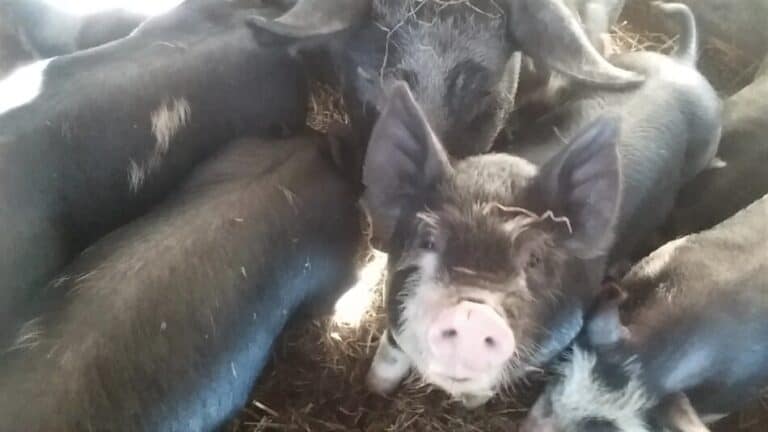Raising Feeder Pigs: How Long Does It Take?
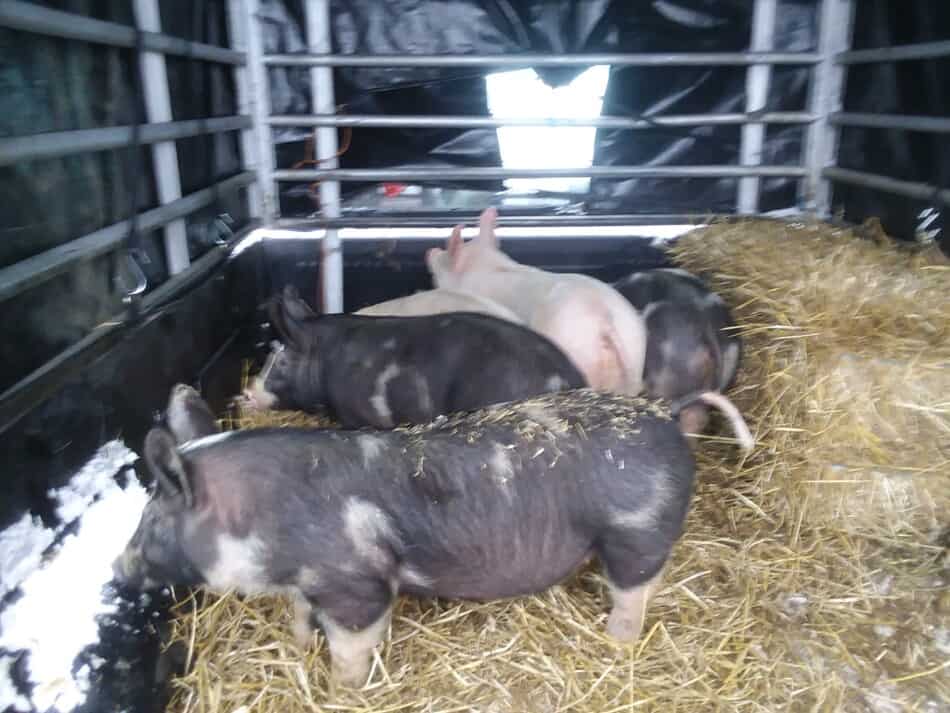
When you are considering raising your own pork, one of the basic questions you’ll need to figure out is how long will those pigs take to grow.
Healthy, fast growing feeder pigs will grow from 50 pounds to 250 pounds in 4 months. Starting with a smaller piglet or raising them to a higher finishing weight will take longer.
Buying production (also called commercial) type feeder pigs will get you the fastest growing and hardiest pigs for your time and money.
Production type pigs would include Berkshire, Duroc, Hampshire, Landrace, Yorkshire and crossbreds.
Using unusual genetics, like rare breeds or new breeds will take longer to finish and cost you more to buy.
Read How much will it cost to feed your pig? if you want to know what to plan on for feed costs.
If you are interested in total costs to get the pig raised and into your freezer, read Is Raising Your Own Pigs For Meat Worth It?
Feeder pigs take 4 months to reach 250 pounds
Start with a 50-60 pound feeder pig and plan to keep it on full feed (free choice feed) and plentiful water.
With full feed, a high quality commercial type feeder pig will finish (grow to slaughter weight and condition) in 4 months.
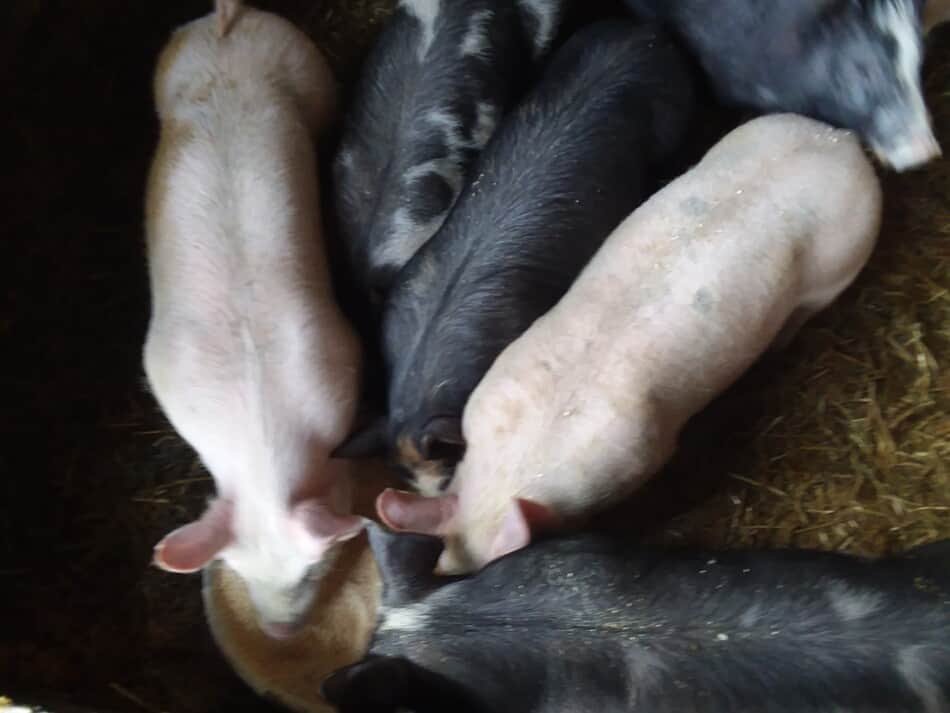
Feeder pigs will take 5+ months to reach 300 pounds
If you are starting with the same high quality feeder pig and are planning to raise it up to 300+ pounds, it will take a month or so longer.
Some piglets will grow more quickly than others
300 pounds (or over) is the weight that we prefer to sell our pigs at.
We just sold the last of our group of market hogs. A few of them did make the 300 pound weight at 4.5 months, these were the really fast growers of the bunch.
Your pigs might grow this quickly, but they just as easily might not.
More commonly, reaching the 300 mark took 5-5.5 months for most of the rest of the group. A few of the poor performers took even longer.
300 pound pigs have plenty of fat for flavor
When your feeder pig reaches 300 pounds you know it has a plentiful amount of fat, both around the meat and throughout the meat (marbling).
Fat is flavor. If you want the best tasting pigs, grow them out to where they have some chub to spare. Dinner will be better because of it!
Cross bred piglets will grow the quickest
Cross bred piglets will grow more quickly than purebred piglets.
Cross bred pigs have hybrid vigor, which means they grow a bit faster and are more hardy than the average purebred.
Most of the piglets available for sale as feeder pigs will be cross breds, which is great news for the aspiring pig owner!
The most common cross bred pig is a “blue butt”
The most common cross is a white maternal type sow with a colored meat type boar producing the classic “blue butt” piglet.
Blue butts are a wonderful choice for a feeder pig, since they are fast growing and hardy. What more could you ask?
Rare breed piglets will grow more slowly
If you are thinking of a rare breed or even a specific breed of piglet, know that they will be slower to finish than a crossbred.
This makes sense, if the rare breed was the fastest or most efficient grower, it would be common, not rare!
If having a certain breed of piglets matters to you, get what you want. It’s important to be happy with what you are doing.
If you just want great pork for the freezer, start with a few 50-60 pound crossbred feeder pigs and see how raising your own pork goes for you.
Once you have some experience, get more specialized if you’d like.
Purebred piglets will grow more slowly
As mentioned above, purebred piglets will grow more slowly than crossbred piglets, simply because they do not have the advantage of hybrid vigor.
How much slower? Honestly I don’t know. If I had to guess, I’d say a few weeks slower, but that would depend upon the breed.
Feeder pig growth depends upon the breed
Something like a purebred Duroc, Yorkshire or Hampshire would still be a pretty fast grower, since these are production breeds of pigs.
Whereas something like a Mangalista or other unusual breed would be much slower to grow, since they are not a production focused breed.
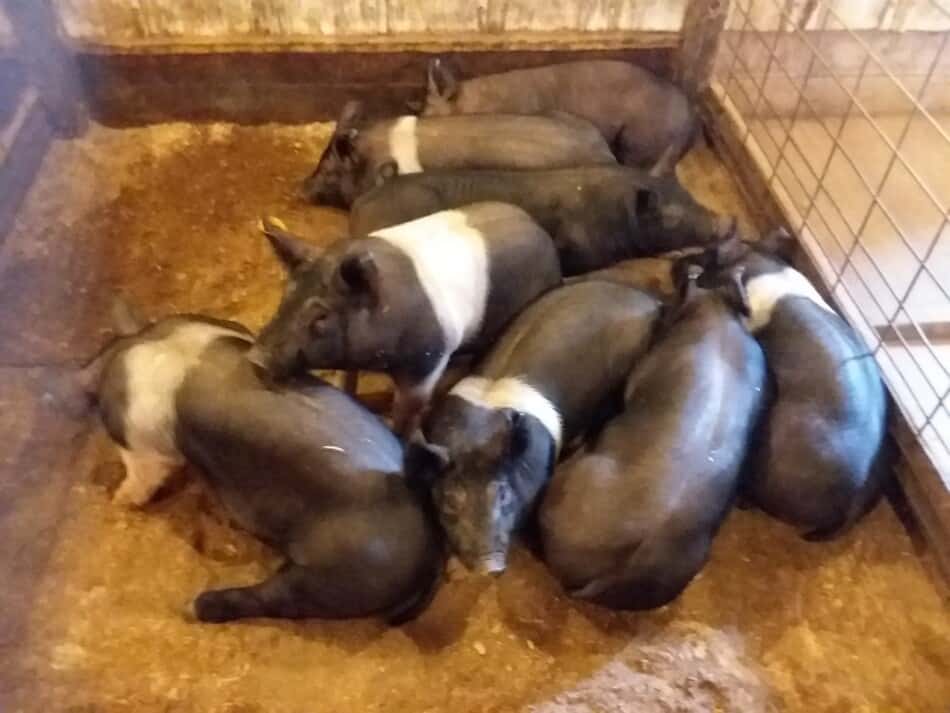
Buy your feeder pigs locally, if possible
If you can get a nice set of purebred piglets, go for it! Especially if you can get them from a local breeder, that’s golden!
I have to admit, I am breeding our pigs toward purebred. If I was selecting on growth alone, I would cross them up to maximize hybrid vigor.
Starting with a smaller feeder pig takes more time
Starting off with a smaller feeder pig, under 50 pounds, will take more work on your part to get that pig to finishing weight.
The work will be mostly time and feed, but a bit of stress compensation, as well.
Younger feeder pigs are more likely to have a hard time moving to your place than an older set of feeder pigs.
Bigger feeder pigs are worth more to you!
Getting a bigger, 50-60 pound, feeder pig should be your goal. They will cost a bit more than a smaller piglet, but are worth it!
Keeping feeder pigs for a few weeks while they grow a bit and adjust to eating grain (no more milk from mom) takes time and money for the breeder.
It’s only right that you pay the breeder for the extra effort. To me, it’s well worth the extra money to pay for a bigger feeder pig that will be more hardy from the get go.
Smaller feeder pigs take longer to grow
If all you can get are younger feeder pigs, that’s okay. Keep an especially keen eye on them for the first week or so to make sure they adjust well to your place.
Be wary of small feeder pigs, meaning the smaller pigs in the litter. They will not grow as quickly as the early fast growers.
They will grow, but it will take more time, possibly lots more time.
Starting with a unthrifty feeder pig takes forever
Never buy an unthrifty piglet, this is a disaster money and time wise. Even if you think it’s a “deal” I can guarantee you, it’s not!
Unthrifty piglets are the ones that are unusually small, sickly or have an odd look to them.
An unthrifty piglet will be a money pit. These characters will take seemingly forever to finish out to an acceptable weight and condition.
Here is an example: we just sold the last of our two litters of market hogs. The first ones, the fastest to 300 pounds, sold in mid October. The slowest one sold in mid December!
That’s two more months to get to an acceptable selling weight, yikes! And even then she only weighted 290, not 300+ like the rest!
I called this character Squiffy and she was a slow grower from the start. She was a bit hyper and had crinkled ears, she should have had upright ears.
The weird ears themselves don’t matter, they just indicate that something wasn’t quite right with this piglet.
Squiffy was born here, I didn’t buy in these piglets. Clearly, I’ve got some work to do to improve my breeding stock.
The point here is that Squiffy took two months longer than her fast growing siblings. That’s a lot of extra time and feed for poor results.
How much extra feed did Squiffy need? I just did the math, she took 50% more feed than the best growers!
Don’t get an unthrifty pig, the effort to get them to finishing weight is not worth your time when you could buy a nice pig to start with!
Pigs grow more slowly in hot weather
The weather you and your pigs will be dealing with is the final consideration. While pigs like cool weather, they aren’t big on heat.
As long as your piglets are kept comfortable, they will be able to grow at their genetic best, even in the summer.
When they are hot, they do not feel like eating as much so they do not grow as well.
Your job is to keep your piglets comfortable by giving them shade, plentiful water and a cool place to lay.
Here is an article on care and management of feeder pigs from Oregon State University, if you want to check it out.
On the super hot days, consider making them a wallow. If your porkers are outside, this is easy, just turn on the hose and make a puddle. Your pigs will handle it from there!
Even pigs inside can lay in water poured on a low spot in the bedding, this is what I do for mine!
